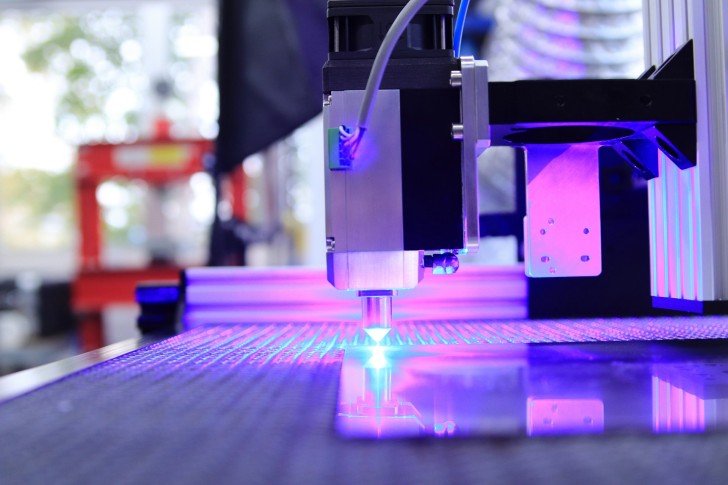The actual monetary benefit of laser welding manifests itself once the parts have moved out of the weld house. By this, we mean in your scrap rate, tool investment, consistency of parts, and overall production workflow. And there is the greatest saving of all.
Here are the real advantages of laser welding beyond speed:
Reduced rework expenses
One of the most silent profit killers in the manufacturing business is rework. Each time you pull a part over to do some touch-up welding, re-shaping, grinding, or checking, it is a loss of money, labor, machine time, and material, all of it.
Industrial Laser Welding will save you a lot of rework since the process is precise on its own. It produces uniform, narrow welds with reduced heat input, that is,
- It requires less weld metal to be added.
- It produces fewer part distortions.
- The completed component practically needs no graining or cleaning.
- Tolerances remain narrow, batch by batch.
Even when your volumes are small, a 10-20% reduction in rework can usually cover the switching cost of the process itself. And in high-volume production, you will notice massive savings over a year.
Reduced fixtures and simpler fixturing
All welding techniques require fixturing, although not all techniques require costly engineered fixturing. Conventional welding, particularly MIG or TIG, needs very massive, cumbersome, and meticulously designed fixtures to manage distortion, position parts square, and guarantee uniformity.
Since laser welding consumes very low heat and does not need physical contact between the tool and the part, your fixturing can be:
- Lighter.
- Simpler.
- Faster to load.
- Cheaper to build.
Your department won’t have to use heavy steel jigs that resist bending, and you will not have to keep adjusting fixtures to maintain the heat. In other cases, all one needs is a stable hold and proper alignment to perform laser welding.
Fewer fixtures means less money for fixtures, shorter project initiation time, and reduced life tooling.
Less rejects
Rejects not only cost you a part, but they also cost you the time and the labor that has already been put into them. Worse still, they delay your work process and schedules. In case you are providing parts to a customer, excessive rejects or inconsistency may hurt your rapport or initiate expensive corrective measures.
Laser welding lowers reject rates drastically since the welding process is:
- Highly controlled.
- Repeatable with sharp precision.
- Less susceptible to heat distortion.
- Less toxic and more secure compared to conventional arc welding.
The laser offers uniform penetration and weld geometry. There’s no guessing. No variability in bead size. Each weld seems to be identical to the previous one.
Such uniformity is priceless when you deal with:
- Thin stainless steel.
- Small components.
- Battery assemblies.
- Medical devices.
- Sensors and electronics.
- Precision automotive parts.
Fewer rejects in a Production Welding run can save thousands of dollars.
Automated handling
Laser welding is an automated process that is inherently compatible with automated handling. This is due to the clean, consistent, and precise nature of the welding process. It can be integrated into highly productive processes, whether you are working with robotics, pick and place systems, or semi-automated loading.
The result is:
- Reduced loading and unloading time.
- Very high repeatability and low operator involvement.
- Predictable cycle times that do not vary during the day.
- Simple integration with in-line inspection or marking systems.
Besides, labour, automation also lowers the percentage of human error, energy consumption, and planned downtime.
Increased tool life
Conventional welding eats through consumables and torch items, especially when a heavy filler material or high heat is used. Laser welding is a process where the tool does not come in contact with the part. Nozzles, contact tips, and liners are not stressed. This entire procedure is more of a precision machining system rather than a heat-based welding process.
This means:
- Fewer consumables to buy.
- A reduced time spent on the maintenance of torches.
- Fewer tool changes between shifts.
- Reduced total maintenance expenses.
And better still, since heat is added sparingly and in a small area, your components, fixtures, and environs are subjected to less thermal fatigue. According to Micro Weld welding experts, this extends the life of your equipment and even parts.
Savings accumulate on your entire production line
It is when you sum up all these advantages that you begin to see the wider picture. Laser welding not only saves time (in seconds), but also saves:
- Labor.
- Material.
- Tooling.
- Inspection time.
- Maintenance.
- Scrap.
- Rework.
- Customer returns.
- Production interruptions.
Such is the type of compounding enhancement that reforms your production economics.
The bottom line
With industrial laser welding, you end up with cleaner parts, fewer troubles, and more predictable output. All without being forced to work harder or add complexity.
 Editorial staff
Editorial staff

 Editorial staff
Editorial staff


